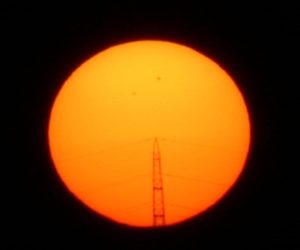
NASA has revealed its plans to send a robotic spacecraft that would orbit sun and gather vital information about solar activities that could impact human life on Earth.
The mission is expected to be launched next year and according to NASA, the spacecraft will stay nearly four million miles from solar surface.
To date, no spacecraft has come so close to Sun, although NASA has sent spacecraft to the Mars, Moon, and some distant asteroids.
“This is going to be our first mission to fly to the Sun,” said Eric Christian, a NASA research scientist at Goddard Space Flight Centre.
“We can’t get to the very surface of the Sun,” but the mission, according to Christian, will attempt to find answer of three questions. First, the mission will reveal why the photosphere or surface of the Sun is much colder than its atmosphere or the corona. The temperature of photosphere is nearly 5,500 degrees Celsius, which compared to corona’s two million degrees Celsius temperature is very less.
“You would think the farther away you get from a heat source, you would get colder. Why the atmosphere is hotter than the surface is a big puzzle,” Christian said.
NASA scientists also believe that the mission will reveal how solar wind gets its speed.
“The Sun blows a stream of charged particles in all directions at a million miles an hour. But we do not understand how that gets accelerated,” Christian said.
Another question that the mission will try to answer is why the Sun sometimes emits high-energy particles that are considered to be dangerous for astronauts and spacecraft.
“Without advance warning a huge solar event could cause two trillion dollars in damage in the US alone, and the eastern seaboard of the US could be without power for a year,” the Solar Probe Mission team informed.
NASA scientists have designed an 11.4-cm carbon-composite shield to protect the spacecraft from 1,370 degrees Celsius temperature outside the spacecraft. Special heat tubes installed on the spacecraft will radiate heat (permeating the heat shield) to open space, and protect heat-sensitive instruments.
According to NASA, the mission is expected to be launched in 2018.


